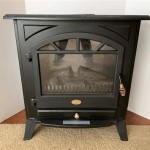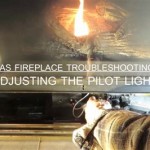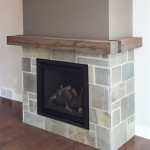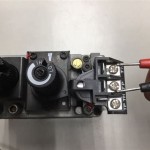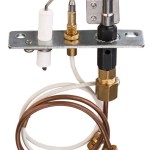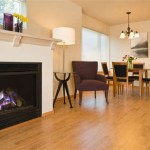Heat Glo Gas Fireplace Maintenance: A Comprehensive Guide
Heat Glo gas fireplaces offer both aesthetic appeal and functional warmth, making them a popular choice for homeowners. However, like any mechanical appliance, regular maintenance is crucial for ensuring optimal performance, safety, and longevity. Neglecting maintenance can lead to decreased heating efficiency, potential safety hazards, and costly repairs. This article provides a comprehensive guide to Heat Glo gas fireplace maintenance, outlining the necessary steps and procedures to keep your fireplace operating effectively and safely.
Understanding the components of a Heat Glo gas fireplace is fundamental to effective maintenance. Key components include the burner assembly, pilot light assembly, gas valve, thermopile or thermocouple, venting system, and the glass door or screen. The burner assembly is where the gas is combusted to produce the flame and heat. The pilot light assembly provides the initial flame to ignite the main burner. The gas valve regulates the flow of gas to the burner. The thermopile or thermocouple senses the pilot light flame and ensures the gas valve remains open only when the pilot is lit. The venting system expels combustion byproducts safely outside the home. Finally, the glass door or screen protects the fireplace from drafts and prevents debris from entering the firebox.
Regular Inspection and Cleaning
Consistent inspection and cleaning are the cornerstones of effective Heat Glo gas fireplace maintenance. A visual inspection should be conducted at least once a year, preferably before the start of the heating season. This inspection should encompass all visible components of the fireplace, including the burner, pilot light assembly, venting system, and surrounding area.
The burner should be examined for any signs of corrosion, rust, or debris buildup. Check the burner ports (small holes or slots where gas is released) for obstructions. These ports can become clogged with dust, soot, or spider webs, hindering proper gas flow and leading to uneven or weak flames. A soft brush or vacuum cleaner attachment can be used to carefully remove any debris from the burner.
The pilot light assembly should also be inspected for cleanliness and proper flame appearance. A healthy pilot flame is typically blue with a slight yellow tip. A yellow, flickering, or weak pilot flame may indicate a dirty pilot orifice or a problem with the gas supply. Clean the pilot orifice with a small wire or needle, being careful not to enlarge the opening. If the pilot flame remains problematic after cleaning, it may require adjustment by a qualified technician.
The venting system needs careful scrutiny. Check the vent pipes for any signs of damage, such as dents, cracks, or corrosion. Ensure that all vent pipe connections are secure and airtight. Blockages in the vent pipe can lead to dangerous carbon monoxide buildup in the home. Inspect the vent termination cap on the exterior of the house to ensure it is free from obstructions like leaves, snow, or bird nests. If you suspect a blockage, contact a professional to inspect and clean the venting system.
Cleaning the glass door or screen is essential for maintaining the aesthetic appeal of the fireplace. Use a fireplace glass cleaner specifically designed for this purpose. Avoid using abrasive cleaners, as they can scratch the glass. Apply the cleaner according to the manufacturer's instructions and wipe the glass clean with a soft cloth. Remove any debris or soot buildup from the screen using a soft brush or vacuum cleaner attachment.
In addition to the fireplace itself, inspect the surrounding area for any flammable materials. Ensure that curtains, furniture, and other combustible items are kept a safe distance from the fireplace. Check the operation of any safety features, such as the carbon monoxide detector, to ensure they are functioning properly. Replace batteries in the carbon monoxide detector regularly.
Pilot Light Maintenance and Troubleshooting
The pilot light is a crucial component of a Heat Glo gas fireplace, providing the ignition source for the main burner. Maintaining a healthy pilot light is essential for reliable fireplace operation. If the pilot light fails to stay lit, it can be a frustrating issue. Several factors can contribute to this problem, and troubleshooting the pilot light is a common aspect of gas fireplace maintenance.
One of the most common causes of a pilot light that won't stay lit is a dirty pilot orifice. Over time, dust, soot, and other debris can accumulate in the orifice, restricting gas flow and weakening the pilot flame. Cleaning the pilot orifice with a small wire or needle can often resolve this issue. Turn off the gas supply to the fireplace before attempting to clean the orifice. Carefully insert the wire or needle into the orifice and gently remove any debris. Avoid enlarging the orifice, as this can affect the pilot flame's performance.
A faulty thermopile or thermocouple can also cause the pilot light to go out. The thermopile or thermocouple is a safety device that senses the heat from the pilot flame. When the pilot flame is present, the thermopile or thermocouple generates a small electrical current that keeps the gas valve open. If the thermopile or thermocouple is faulty, it may not generate enough current to keep the gas valve open, causing the pilot light to extinguish. A multimeter can be used to test the output voltage of the thermopile or thermocouple. If the voltage is below the manufacturer's specifications, the thermopile or thermocouple needs replacement.
A blocked or restricted gas supply can also prevent the pilot light from staying lit. Check the gas supply valve to ensure it is fully open. Inspect the gas line for any kinks or obstructions. If the gas pressure is too low, the pilot flame may be weak and unable to stay lit. Contact a qualified technician to check the gas pressure and address any issues with the gas supply.
Drafts can also extinguish the pilot light. Ensure that the fireplace is properly sealed and that there are no drafts blowing directly on the pilot flame. Install a wind guard around the vent termination cap to prevent drafts from entering the venting system.
If the pilot light continues to go out after cleaning the orifice, checking the thermopile or thermocouple, and verifying the gas supply, it is recommended to contact a qualified gas fireplace technician for further diagnosis and repair.
Professional Servicing and Safety Considerations
While many aspects of Heat Glo gas fireplace maintenance can be performed by homeowners, certain tasks require the expertise of a qualified technician. Annual professional servicing is recommended to ensure optimal performance and safety. A professional technician can conduct a thorough inspection of the entire fireplace system, including components that are not readily accessible to homeowners.
Professional servicing typically includes a comprehensive cleaning of the burner assembly, pilot light assembly, and venting system. The technician will also inspect the gas valve, thermopile or thermocouple, and other safety devices to ensure they are functioning correctly. They can also check the gas pressure and adjust the burner settings for optimal combustion. Additionally, a professional can identify and address any potential safety hazards, such as gas leaks or carbon monoxide buildup.
Carbon monoxide (CO) is a colorless, odorless, and deadly gas that can be produced by incomplete combustion in gas appliances. It is crucial to have a functioning carbon monoxide detector installed near the fireplace and to test it regularly. Replace the batteries in the carbon monoxide detector at least twice a year. If the carbon monoxide detector alarms, evacuate the home immediately and call the fire department or gas company.
Never attempt to repair or modify the gas fireplace yourself if you are not qualified. Gas appliances are complex systems, and improper repairs can lead to dangerous gas leaks or explosions. Always hire a qualified technician to perform any repairs or modifications to the fireplace.
Before starting any maintenance or repair work on the gas fireplace, always turn off the gas supply to the fireplace. Locate the gas shut-off valve, which is typically located near the fireplace or in the basement. Use a wrench to turn the valve to the "off" position. Do not light a match or lighter near the fireplace while working on it, as there may be residual gas present.
Proper Heat Glo gas fireplace maintenance is essential for ensuring its safe and efficient operation. Regular inspection, cleaning, and professional servicing will help extend the lifespan of your fireplace and provide you with years of reliable warmth and enjoyment. By adhering to these guidelines, homeowners can ensure that their Heat Glo gas fireplace remains a safe and efficient source of heat.

How To Clean The Glass On A Heat Glo Gas Fireplace

Heat Glo Gas Fireplace Insert Installation Repair Jacobs

Troubleshooting Maintenance

Cleaning The Inside Of Glass On A Heat Glo Fireplace Diy Heatandglo

305 Heat N Glo Model 6000 Tr Oak Cleaning The Glass

What You Should Know About Gas Fireplace Maintenance

Gas Fireplace Installation Heat Glo Westair Heating Cooling
Sl 5x Au Balanced Flue Gas Fireplace Heat Glo

Heat Glo 6000 Modern Gas Fireplace H2oasis

Heat Glo Slimline Fusion Series Gas Fireplace Hearth And Home Distributors Of Utah Llc
Related Posts

